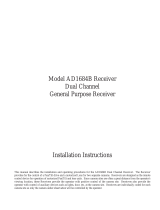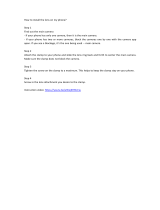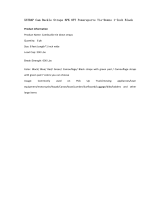
SpeedDome Ultra III Camera Dome
8000-2573-01, Rev. B
INSTALLATION AND SERVICE GUIDE 9
Warnings and Cautions
Please review the following warnings and cautions
before you begin installation or service.
WARNINGS
!
WARNING!
ALWAYS USE:
•
Proper safety equipment for the
location and type of installation.
•
Proper lift equipment to reach the
installation.
•
Safety features of the lift equipment.
BE SURE:
•
Electrical power is not connected to the
dome when connecting wires. Dome
will move when power is applied.
•
Electrical power is not connected to
nearby fixtures that you might touch
during installation.
!
WARNING!
DO NOT install this camera dome in
hazardous areas where highly combustible
or explosive products are stored or used.
!
WARNING!
This dome runs on 24Vac.
DO NOT
connect line voltage to this dome.
North America power requirements:
In
North America, this device is intended to
be supplied from a Class 2 power supply.
For outdoor installations, use Class 3
wiring techniques, liquid-tight conduit, or
liquid-tight pipe.
This installation should be made by a
qualified service person and should
conform to all local codes.
!
WARNING!
EU power requirements:
This product
runs on 24Vac. In the EU, it is intended to
be powered from a Limited Power Source.
A limited power source is a certified source
of SELV, and if inherently limited, with 8
amps maximum output current, and a
maximum of 100VA available; or if not
inherently limited, fused with a maximum
value of 3.3 Amps, meeting section 2.11 of
IEC950, and a maximum of 250VA
available. The power supply can be
obtained through Sensormatic or through
another source where the provider can
furnish the verification. This is required to
assure electrical safety in the product.
Stromanforderungen in der EU:
Dieses
Produkt wird mit 24 V Wechselstrom
betrieben. In der EU ist es für den Betrieb
durch eine begrenzte Stromquelle
vorgesehen. Eine begrenzte Stromquelle
ist eine zertifizierte SELV-Quelle
(Schutzkleinspannung), bei inhärenter
Begrenzung mit einem maximalen
Ausgangsstrom von 8 A und 100 VA
maximaler Verfügbarkeit, bei nicht
inhärenter Begrenzung mit einer
maximalen Sicherung von 3,3 A gemäß
Abschnitt 2.11 der IEC950 und 250 VA
maximaler Verfügbarkeit. Das Netzteil
kann über Sensormatic oder eine andere
Quelle bezogen werden, wobei der
Anbieter den Nachweis der Konformität
bereitstellen sollte. Dies ist zur
Gewährleistung der elektrischen Sicherheit
des Produktes erforderlich.
































